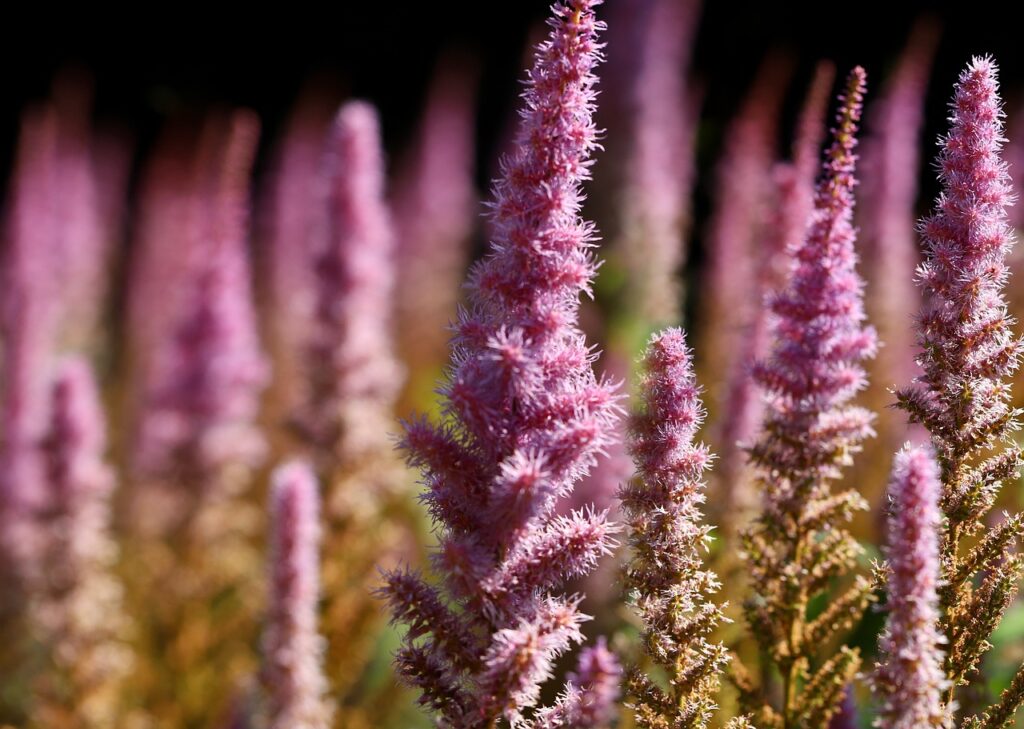In a world filled with constant stress and anxiety, finding natural ways to relax and rejuvenate is more important than ever. One of the most effective and beautiful methods is flower therapy—surrounding yourself with plants that have calming and therapeutic properties. Whether you’re an avid gardener or just starting out, incorporating these stress-relieving plants into your home or garden can transform your space into a sanctuary of peace. Let’s explore the best plants for reducing stress and how they can positively impact your mental and emotional well-being.
1. Lavender (Lavandula angustifolia)

Why It Works: Lavender is renowned for its soothing fragrance, which has been scientifically proven to reduce anxiety and promote relaxation. Its scent can lower cortisol levels, the hormone associated with stress.
How to Use: Place a pot of lavender in your bedroom or living area, or use dried lavender in sachets or pillows. You can also brew lavender tea for a calming drink.
2. Jasmine (Jasminum officinale)
Why It Works: Jasmine’s sweet, floral aroma is known to uplift the mood and reduce stress. Studies have shown that it can improve sleep quality and increase feelings of well-being.
How to Use: Grow jasmine near windows or outdoor seating areas where its scent can waft indoors. Use jasmine essential oil in a diffuser for a calming atmosphere.
3. Chamomile (Matricaria chamomilla)
Why It Works: Chamomile is a gentle herb that has been used for centuries to calm nerves and promote relaxation. Its mild sedative properties make it ideal for reducing stress and improving sleep.
How to Use: Brew chamomile tea or plant it in your garden to enjoy its delicate, daisy-like flowers. You can also use chamomile essential oil in aromatherapy.
4. Aloe Vera (Aloe barbadensis)
Why It Works: Beyond its skin-healing properties, aloe vera is known to purify the air and create a calming environment. Its presence can help reduce stress and improve indoor air quality.
How to Use: Place an aloe vera plant in your workspace or living room. Its low-maintenance nature makes it perfect for busy individuals.
5. Peace Lily (Spathiphyllum)
Why It Works: The peace lily is not only a beautiful plant but also an excellent air purifier. It helps remove toxins from the air, creating a healthier and more relaxing environment.
How to Use: Keep a peace lily in your bedroom or office to enjoy its calming effects and elegant white blooms.
6. Rosemary (Rosmarinus officinalis)
Why It Works: Rosemary’s invigorating scent is known to improve focus, reduce mental fatigue, and alleviate stress. It’s also linked to improved memory and cognitive function.
How to Use: Grow rosemary in your kitchen or garden. Use its leaves in cooking or inhale its aroma for an instant mood boost.
7. Gerbera Daisy (Gerbera jamesonii)
Why It Works: The bright, cheerful blooms of gerbera daisies are known to lift spirits and reduce stress. Their vibrant colors can instantly brighten any space.
How to Use: Place gerbera daisies in vases around your home or grow them in your garden for a burst of color and positivity.
8. Snake Plant (Sansevieria trifasciata)
Why It Works: The snake plant is a powerful air purifier that releases oxygen at night, making it ideal for improving sleep quality and reducing stress.
How to Use: Place a snake plant in your bedroom to enjoy its air-purifying benefits and sleek, modern look.
9. Gardenia (Gardenia jasminoides)
Why It Works: Gardenias are known for their intoxicating fragrance, which has been shown to reduce anxiety and promote relaxation.
How to Use: Grow gardenias in pots or garden beds near seating areas to enjoy their scent. Use gardenia essential oil in a diffuser for a calming effect.
10. Mint (Mentha spp.)
Why It Works: Mint’s refreshing aroma is known to reduce stress, improve focus, and boost energy levels. It’s also great for digestion, which can be affected by stress.
How to Use: Grow mint in pots or garden beds. Use its leaves to make tea or add them to water for a refreshing drink.
How to Incorporate Flower Therapy into Your Life
- Create a Relaxing Space: Designate a corner of your home or garden as a calming retreat with stress-relieving plants.
- Practice Mindfulness: Spend a few minutes each day tending to your plants, focusing on their beauty and fragrance.
- Use Aromatherapy: Incorporate essential oils or dried flowers from these plants into your daily routine.
- Gift Plants: Share the benefits of flower therapy by gifting stress-relieving plants to loved ones.
Why Flower Therapy Works
Flowers and plants have a unique ability to connect us with nature, which has been shown to reduce stress and improve mental health. Their colors, scents, and textures engage our senses, creating a calming and uplifting environment. By surrounding yourself with these stress-relieving plants, you can create a natural oasis that promotes relaxation and well-being.
Final Thoughts
Flower therapy is a simple yet powerful way to reduce stress and enhance your quality of life. Whether you’re growing lavender on your windowsill or filling your garden with chamomile and jasmine, these plants offer both beauty and therapeutic benefits. Start small, experiment with different plants, and discover how flower therapy can transform your home and mind.